Если вы думаете, что ведение блога — баловство, то крупно ошибаетесь. Этот инструмент используется в маркетинге для привлечения дополнительного трафика, формирования аудитории, что в конечном итоге сказывается на коэффициенте конверсии и росте продаж. Но есть один нюанс — блог должен быть крутым, он должен “цеплять” читателя, унылой копипастой в наше время никого удивить не получится.
На что обратить внимание при написании
По определению из Википедии блог — интернет-журнал, в котором регулярно публикуются материалы, содержащие текст, видео- и фотоматериалы. При этом нет никаких ограничений по тому, кто может вести блог — это может быть и один человек, и крупный интернет-магазин.
Этот инструмент используется и для продвижения бизнеса в сети, из преимуществ использования блога выделим:
- возможность повысить позицию сайта в поисковой выдаче. Придется поработать с SEO оптимизацией, но результат того стоит. Грамотно вписанные ключи не испортят текст, но улучшат позицию сайта;
- текстовые материалы (особенно если они предлагают что-то новое, а не копипастят конкурентов) + фото и видео привлекает аудиторию. Формируется ядро тех, кто со временем привыкает вас читать;
- блог позиционирует вас как эксперта в своей области — это добавляет “вес” в глазах потенциального клиента;
- можно перенаправить трафик на нужные страницы сайта;
- повышение узнаваемости бренда, если посвятить одному имени ряд материалов.
На творческой составляющей остановимся чуть позже, пока что затронем общие требования к оформлению блогов:
- идеальная грамматика — читать текст, изобилующий грамматическими ошибками ошибками, физически неприятно. Блог — один из способов общения с аудиторией, представьте себе собеседника, который через слово использует жаргонизмы, неправильно ставит ударения, вряд ли вам понравится общение с таким человеком. То же касается и текста;
- придерживайтесь одного стиля. Блог не место для постоянных экспериментов, как только сложился узнаваемый стиль, старайтесь придерживаться его. Если в одной публикации у вас краткий, лаконичный заголовок, в другой — максимально развернутый, а в третьей вы попытались неудачно пошутить, это запутает читателей. Создается ощущение, что блог ведется по остаточному принципу, никто не занимается им целенаправленно;
- следите за трендами. Никому не интересен устаревший материал;
- тематика блога должна перекликаться с тем, что вы предлагаете. Если это интернет магазин по продаже комплектующих, подойдут обзоры последних “железных” новинок, их тестирование, новости из этой же сферы, материалы в духе “подбор конфигурации ПК под разный бюджет”. Для маркетингового агентства уместно будет описание различных успешных кейсов, текущих и будущих трендов в маркетинге. Главное правило — играйте на своем поле.
Эти советы звучат просто и в некоторой степени покажутся вам банальными, но это не уменьшает их значимость.
Как написать яркий пост
Ниже — небольшой FAQ, поясняющий принцип написания цепляющего поста для блога. Он универсален, подойдет и маркетологу, и магазину, торгующему спортивным инвентарем. Исходим из того, что вы уже нащупали то, что интересует аудиторию и продумали структуру поста в целом.
Создаем цепляющий заголовок
Помните поговорку о том, что человека встречают по одежке, а провожают по уму? С заголовками примерно та же история, только если заголовок будет неинтересным, то у читателя может не возникнуть желания знакомиться с постом.
Независимо от того, в какой сфере работаете к заголовкам выдвигается ряд универсальных требований:
- он должен быть лаконичным и давать ясное представление о том, что будет в текстовой части;
- не переусердствуйте с “сухостью”;
- далеко не всегда кликбейтные заголовки работают, лучше их не использовать, особенно, если вы только начали вести блог;
- не обманывайте читателей — это касается и текста блога;
- оставляйте элемент недосказанности;
- не используйте сложные для понимания метафоры, не все их поймут, так что не сокращайте аудиторию.
Что касается длины заголовка, то этот вопрос спорный. С одной стороны в поисковой выдаче длинные названия обрезаются и это плохо — читатель не видит все, что вы хотели сказать. Но недавнее исследование Backlinko показало, что длинные заголовки привлекают большее внимание, чем короткие.

Обратите внимание на заголовки — нет лишних слов, нет воды. Дан необходимый минимум информации, чтобы читатель заинтересовался и перешел к чтению поста.
Если столкнулись с кризисом идей, посмотрите как пишут заголовки топовые конкуренты. Копировать их необязательно, но направление мысли это задаст.
Продумываем введение
Это первое, что видит читатель после заголовка. Именно поэтому введение прорабатывается особо тщательно. При проработке этого элемента поста:
- избегайте сложных “многоэтажных” конструкций, приоритет у простых, понятных предложений;
- основная цель — парой предложений показать читателю, о чем дальше пойдет речь. Введение — приманка, читатель должен проглотить ее и заинтересоваться;
- в зависимости от стиля поста допускается эмоциональность.

Введение должно быть коротким. Не факт, что сразу получится написать эту часть поста, стандартная ситуация, когда приходится переделывать вступление несколько раз.
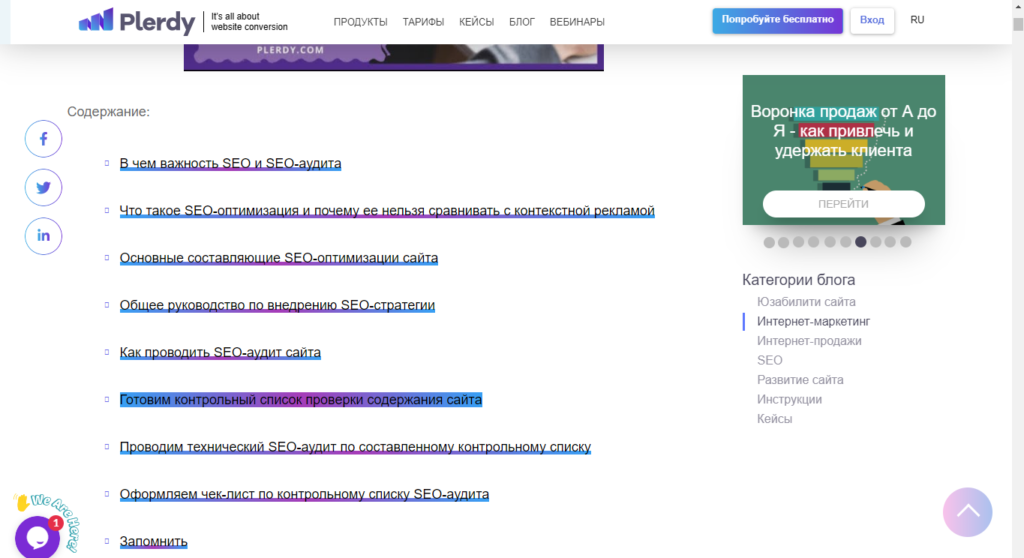
Если пост получается объемным, разместите после введения пункты содержания, читатель оценит удобство навигации. Если в будущем он вернется к чтению, ему не придется скроллить 10-20 секунд до нужного места — меньше шансов на то, что посетитель уйдет со страницы.
Пишем основную часть поста
В идеале нужно написать за один раз хотя бы черновой вариант поста. Так меньше шансов, что упустите важные мысли, да и нить повествования не будет рваться.
Так как пост может быть объемным, рекомендуем:
- проработать план, набросать структуру поста, это скелет, на который осталось нанизать удобочитаемый текст;
- самое большее за 3-4 подхода создать черновой вариант текста, которому не будут нужны фундаментальные правки;
- не размещать пост в блоге сразу после написания. Подождите день и перечитайте его заново — скорее всего заметите мелкие огрехи. Как вариант можно дать прочесть его своим знакомым/коллегами;
- при написании текста избегайте объемных абзацев и длинных сложносочиненных предложений;
- пользуйтесь маркированными и нумерованными списками;
- особо важные нюансы можно выделять курсивом или иным способом;
- пользуйтесь подзаголовками для структурирования материала. Так материал лучше воспринимается читателем, да и излагать мысли легче. Разделите текст на отдельные секции и дайте каждой название.
Для гарантии проверьте уже написанный и откорректированный текст на предмет орфографических и синтаксических ошибок.
Заключению, как и введению, уделите особое внимание. Можете не только коротко подытожить все сказанное выше, но и дать совет, мотивировать читателя, если это уместно.
Добавляем изображения
При чтении сплошной стены текста, как бы интересно он ни был написан, внимание читателя притупляется. Поэтому в длинных постах обязательно использование изображений независимо от тематики. Если речь идет о результатах какого-либо исследования, то изображения просто необходимы — они выполняют еще и информационную роль.
Из преимуществ использования изображений отметим:
- возможность разбить текст и облегчить его восприятие. Читатели часто в первую очередь просматривают картинки, так что важно правильно подобрать их;
- возможность выстроить доверительные отношения с посетителем блога. Если вставите уместную картинку с забавной шуткой, это сблизит вас с читателем, уберет излишний официоз;
- простоту донесения информации. Диаграммы и различные типы графиков без проблем воспринимаются визуально, но текстом описывать их неудобно.

Юмор уместен в большинстве случаев. Даже если пишете в большей степени исследовательский пост, можно повысить настроение читателя этим способом.
SEO оптимизация
Пост в блоге создается в первую очередь чтобы сообщить читателю что-то, не нужно писать его только ради SEO продвижения сайта. Но и полностью отказываться от SEO оптимизации текста не стоит. Найдите золотую середину:
- проведите оптимизацию текста по ключевым словам;
- используйте разные вариации написания ключевого слова, поисковые алгоритмы учитывают это при ранжировании сайта;
- добавьте ссылки на другие разделы сайта. Так можно перенаправить читателей на нужные страницы. Проверьте, чтобы все они были рабочими, битые ссылки раздражают и могут стать поводом просто закрыть сайт;
- при публикации добавьте alt атрибуты для изображений;
- добавьте дескрипшн и тайтл.
Все эти пункты не ухудшают восприятие текста, зато повышается шанс, что позиции сайта в поисковой выдаче улучшатся.
Call-to-Action элементы и pop-up формы
Через СТА элементы можно попросить читателей поставить лайк, написать комментарий, подписаться на рассылку обновлений блога. Злоупотреблять этим инструментом не стоит, но и забывать о нем не рекомендуем.
Если сомневаетесь в том как использовать призыв к действию, ограничьтесь беспроигрышным вариантом. Разместите в конце поста призыв поделиться ссылкой в своем Facebook, ВКонтакте, Twitter, LinkedIn.

Что касается pop-up форм, то этот элемент используется для привлечения внимания читателя. Использоваться может, например, при попытке читателя покинуть страницу, чтобы информировать его о важном предложении.
Обилие pop-up форм противопоказано — это раздражает.
Не знаете о чем писать в бизнес блоге? Вот 20 рабочих идей
Один из самых сложных этапов — правильный выбор темы. Пост пишется в первую очередь для привлечения аудитории, тема должна быть интересна широкому кругу людей. Ниже — подборка неплохих идей, можете брать каждую из них и начинать готовить пост для своего блога.
Ответ на популярный вопрос + разбор кейсов
У постов этого типа двойная ценность:
- их интересно читать;
- читатель может использовать их как руководство к действию. Если вы последовательно опишете решение какой-либо проблемы, например, как проводится SEO аудит сайта, посетитель блога будет иметь представление о том, какие факторы влияют на SEO, что дает оптимизация, из каких этапов состоит оценка сайта.

Для наглядности желательно наличие конкретного примера. На plerdy.com в блоге есть примеры таких постов, например, разбор SEO и юзабилити аудита, на примере сайта kidsi.com.ua.
Никто не заставляет вас выкладывать все собственные секреты. Часть обязательно оставьте про запас, чтобы у читателя был стимул обратиться к вам за помощью. Все-таки у блога не только информационная роль, он должен еще и привлекать потенциальных клиентов.
Экскурс в историю бизнеса
Этот прием работает безотказно. Пост информационного характера, в нем описываете историю индустрии, в которой работаете, можно включить в описание интересные факты. Как вариант — под конец поста упомяните о своей компании, как пришли к идее ее создания, что нового планируете привнести в отрасль.
Если уверены в том, что история получится интересной, можно разбить ее на несколько частей и выпустить серию постов. Не забывайте разбавлять текст изображениями.

Как пример постов такого типа можете изучить публикации в блоге timesheets.com. В серии постов рассказывается история развития часов, не просто статья, а небольшое исследование.
Учтите — часть этой информации читатель мог знать и раньше. Изучите несколько источников, структурируйте текст, добавьте побольше фото, это улучшит восприятие материала.
Рассказ о ваших преимуществах
В большинстве сфер бизнеса у вас будут мощные конкуренты. Люди уже привыкли к знакомым именам и к новичкам относятся прохладно. Опубликовав пост о том, чем ваш продукт отличается от того, что предлагают конкуренты, можно ненавязчиво пояснить целевой аудитории, почему стоит выбрать именно вас.

Это не должна быть реклама в чистом виде. Придерживайтесь нейтрального стиля, без выпадов в сторону конкурентов. Просто сравнивайте продукты, делайте акцент на свои сильные стороны. После прочтения читатель должен сам сделать правильный вывод о том, что обращаться стоит именно к вам.
Превращать пост такого типа в инструкцию не стоит. Лучше сделайте ссылки на другие публикации в блоге.
Обычно в таких постах используются заголовки типа “50 преимуществ….” или “40 отличий от….”.
Разбор ошибок и рекомендации по их устранению
Людям интересны чужие неудачи, это явление можно использовать при подборе тематики постов в блоге. В Outbrain проводилось отдельное исследование, подтвердившее, что заголовки, содержащие негатив (указание на ошибки других людей), дают больше кликов.
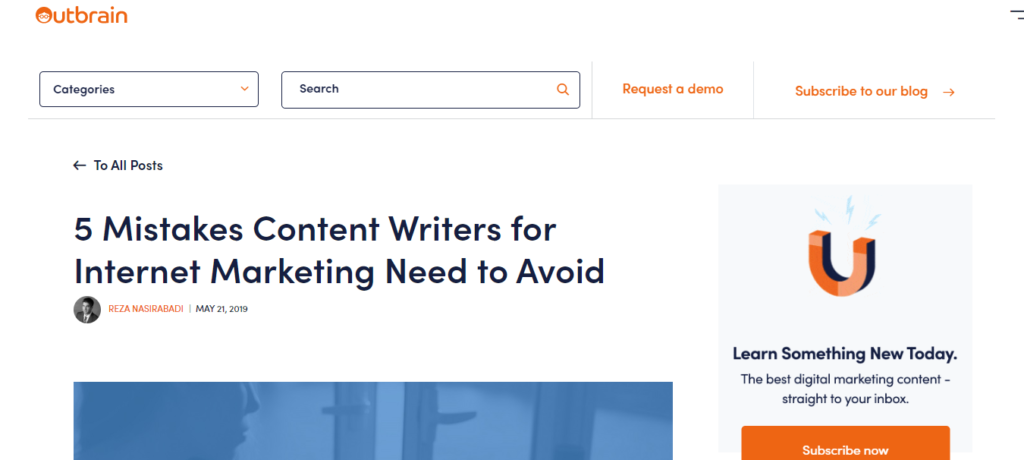
Интерес к негативу объясняется:
- фактором неожиданности. Читатель привык к позитивным заголовкам, что-то в духе “SEO оптимизация мертва….” или “Почему вы не сможете написать качественный контент….” действует как холодный душ;
- желанием научиться на ошибках других людей.
Только не забывайте, что ваша цель — привлечь внимание посетителя блога, а не испортить ему настроение. Не нужно превращать свой блог в источник пессимизма.
Посты такого типа используйте изредка, для разбавления стандартных тематик. Что касается содержания, то желательно не только показывать саму ошибку, но и отобразить, к чему она привела и как избежать/исправить последствия.
Можно рассказать историю из своего прошлого. Например, о том, какие ошибки совершали на старте и как в итоге их преодолели.
Нестандартный подход
Если в жизни страны, на рынке которой вы работаете, происходят значимые события, попробуйте использовать это при написании блога. Например, проанализировать маркетинговые приемы, используемые кандидатами во время президентских выборов и оценить их популярность с точки зрения маркетинга.
Во время президентской кампании все, что связано с выборами постоянно на слуху. Вы получите приток новых читателей, они оценят оригинальный подход к выбору темы.

Это лишь один из вариантов выбора тематики поста, просто следите за жизнью страны и, если получится, используйте “горячие” темы. Особенно хорошо этот метод подходит, если вы занимаетесь маркетингом, SEO анализом и оптимизацией, улучшаете юзабилити сайтов.
Новостные посты
В какой бы сфере вы ни работали, новостей всегда хватает. Это отличный повод сделать отдельный пост и в нем перечислить ключевые из них, указав, как изменения повлияют на индустрию в целом.
Это может быть что угодно:
- изменения в законодательстве и налогообложении;
- апробация новых технологий и техники;
- изменения в работе поисковых алгоритмов, отвечающих за ранжирование сайтов в поисковой выдаче;
- актуальные тренды.
Посты этого типа можно публиковать на регулярной основе, например, раз в неделю или месяц.
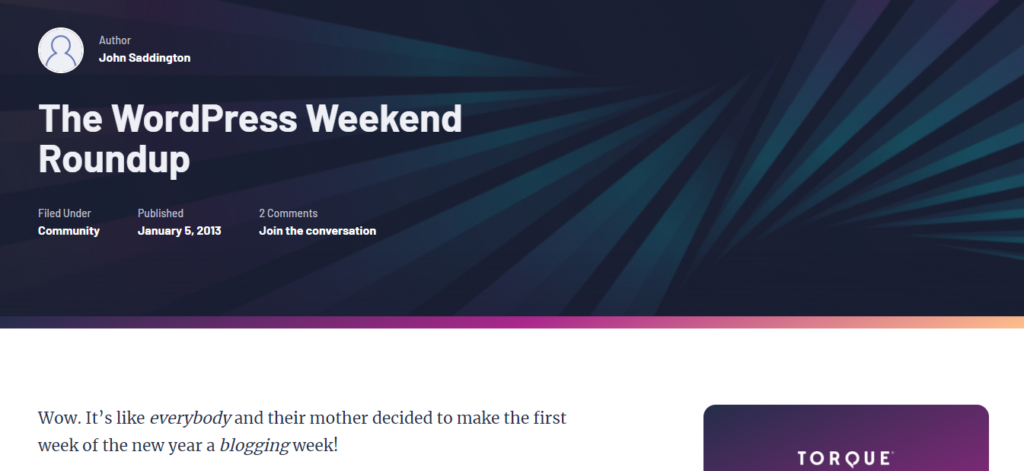
Единственное требование к материалу — актуальность. Привлечь читателей получится только если ваш контент будет свежим, ищите материалы в том числе и в зарубежных источниках.
Гостевые посты
Это отличный прием для привлечения новой аудитории. Суть приема в том, что в вашем блоге размещается пост, например, видного эксперта в вашей области.
Скорее всего, этот эксперт поделиться ссылкой на материал со своей аудиторией. Так что помимо ваших постоянных читателей получите еще и порцию новых посетителей. Если контент в блоге стоящий, часть из них подпишется на обновления, а в будущем могут быть сконвертированы в клиентов.
Единственная проблема — найти того, кто согласиться оставить гостевой пост. Нераскрученным блогам практически невозможно привлечь экспертов, обладающих солидным “весом”. Они не согласятся рисковать репутацией и тратить время на блог с парой десятков подписчиков. Гостевые посты от экспертов с нулевой узнаваемостью не имеют смысла, они никому не будут интересны.
Эту идею используйте только если ваш блок уже крепко стоит на ногах и есть шанс привлечь интересную широкой аудитории личность.
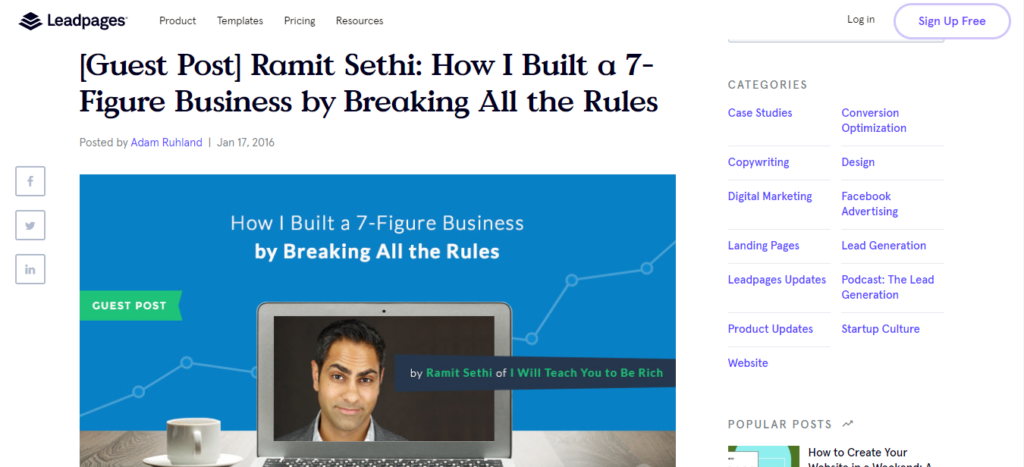
При оформлении поста не забудьте упомянуть, что он гостевой. Это можно сделать прямо в названии или просто указать реального автора.
Попробуйте сыграть на контрасте
Чтобы “встряхнуть” аудиторию можно сделать пост, в котором продукт сравнивается с чем-то совершенно посторонним на первый взгляд. Например, как карате поможет в SEO продвижении сайта.
Читатель пробегает взглядом заголовок поста. Через секунду осознает, что что-то не так, возвращается к нему еще раз, перечитывает и все равно не понимает в чем тут подвох. В итоге ему становится интересно и он переходит к чтению, дальше все зависит от вашего стиля и слога — если пишете интересно, материал будет прочтен.
В блоге Bidsketch в одном из постов развитие бизнеса сравнивается с боевым искусством Джиу-джитсу.
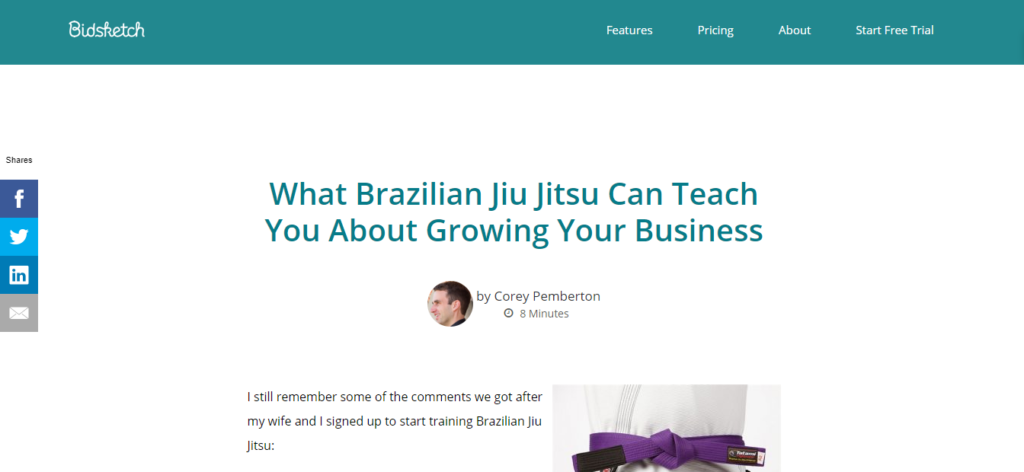
Учтите — недостаточно просто сопоставить 2 совершенно разные вещи в заголовке. Вы должны развить эту мысль в тексте.
Анализ последних трендов в вашей отрасли
Посты этого типа — результаты небольшого исследования. Этот формат особенно хорошо подходит, если вы предлагаете SEO продвижение, улучшение юзабилити, занимаетесь дизайном сайтов. В этих сферах изменения происходят довольно часто, анализ трендов можно сделать постоянной рубрикой блога.

Примеры тем для подобных постов:
- анализ дизайна сайтов лучших отелей мира;
- анализ приемов SMM продвижения в текущем году;
- актуальные приемы использования контекстной рекламы для продвижения продукта;
- популярные приемы контент-маркетинга;
- актуальные тренды в создании интернет-магазинов и выводе бизнеса в сеть.
На подготовку таких постов тратится больше времени чем, например, на описание продукта и его преимуществ. Вступление можно сделать более развернутым чем обычно, описать текущие тренды в общем, после этого переходить к анализу конкретных примеров.
Пост — перечень полезных сервисов
Это особенно актуально для бизнеса, связанного с маркетингом, SEO оптимизацией, улучшением юзабилити, разработкой сайтов. В работе нельзя обойтись без вспомогательных сервисов, в посте можете поделиться теми, которыми пользуетесь сами или просто сделать подборку с кратким описанием каждого из инструментов.

Вот несколько вариантов тем:
- сервисы для определения скорости загрузки сайта;
- сервисы для подбора бизнес имени (доменного имени);
- где можно найти бесплатные качественные фото для оформления сайта. Лучше использовать собственные фото, но и стоковые иногда нужны;
- через какие сервисы лучше проводить соцопросы.
Через такие посты не получится рекламировать свой продукт. У них иная цель — если подборки будут действительно полезными, читатели будут подписываться на обновления, наращивая тем самым базу потенциальных клиентов.
Как клиенты используют ваш продукт
Посты этого типа — своего рода обратная связь с аудиторией, вы показываете потенциальным клиентам как можно использовать ваш продукт. В блоге могут быть отдельные посты, где вы описываете свое предложение, сценарии его использования, но читатели по-разному воспринимают слова продавца и реальный пользовательский опыт.
К тому же клиенты могут найти не совсем стандартный вариант применения вашего продукта, да и в целом их истории оживляют пост. Видно, что ваше предложение востребовано, такие материалы читаются с интересом. Хороший пример — пост в блоге Evernote.

Из недостатков выделим то, что для бизнеса, который только начинает развиваться, такой формат не подойдет. У него еще нет широкой аудитории, а значит и обилия отзывов тоже нет. Эта тематика больше подходит крепко стоящему на ногах бизнесу.
Учитывайте сезонность при написании постов
Спрос на ваш продукт не всегда один и тот же. Обычно при проработке стратегии продвижения это учитывается. Фактор сезонности должен быть учтен и при подготовке постов для блога.
Единой рекомендации нет, отталкивайтесь от того, в какой сфере работаете. Если вашу продукцию часто используют, например, как подарок на Рождество, Новый год и прочие праздники, используйте это. Ближе к праздникам разместите соответствующий пост, возможно это подтолкнет читателей и именно в вашем магазине они сделают покупку.
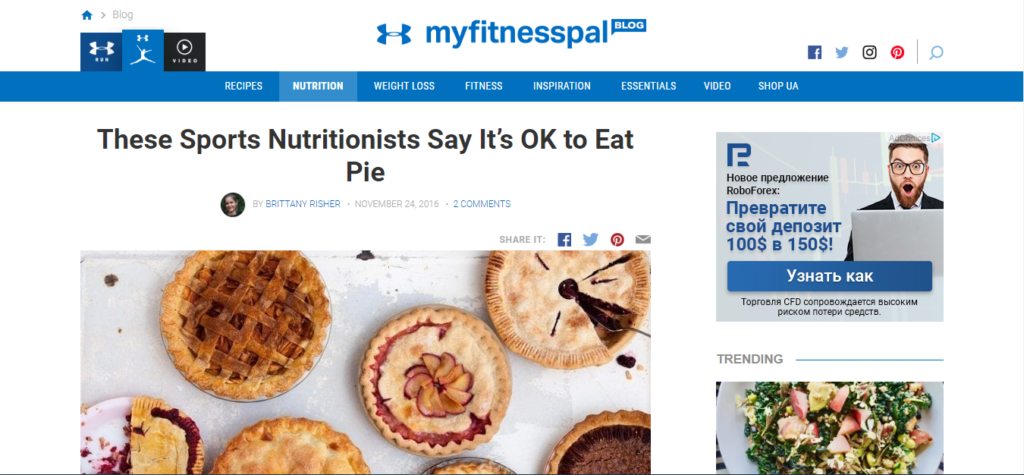
Этот прием универсален, работает и в инфо-, и в обычном бизнесе.
Посвятите пост необычным праздникам
Эта идея особенно хорошо работает при выходе на международный рынок и открытии серии представительств в других странах. У каждого из таких подразделений может быть свой блог и в нем часть постов можно посвятить местным необычным праздникам.
Этим вы показываете аудитории, что уважаете местные традиции, да и сам по себе такой формат интересен читателям. Блог — это не только информация о продукте, но и просто интересные посты, через которые вы общаетесь с аудиторией.
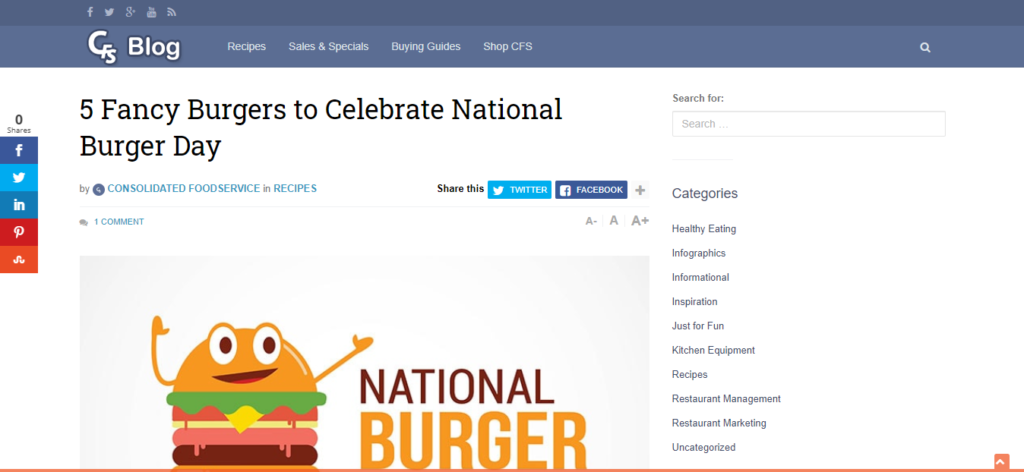
В самом посте уделите внимание истории появления праздника, приведите примеры того, как можно провести этот день. Если это уместно, упомяните свой продукт в этом контексте.
Пост — экскурсия по офису или производству
Этот прием ломает “четвертую стену” между вами и аудиторией. Вы показываете всю подноготную своего производства или работы офиса. В таких постах неплохо смотрится небольшой видеоотчет по своего рода экскурсии. Можно оформить этот пост в духе “один день из жизни компании” или показать полностью процесс производства какого-нибудь продукта.
Если есть какие-то производственные секреты, их, конечно, не раскрывайте. Остальное показывайте смело. На YouTube видео с изготовлением какой-нибудь детали на ЧПУ станке собирают сотни тысяч просмотров, то же может быть и с вашим постом в блоге.
Если работаете в офисе, ничего страшного. Просто покажите как работаете, с какими вызовами сталкиваетесь.

В таких материалах наша цель заключается не в рекламе продукта, в привлечении аудитории.
Экспериментируйте и делитесь результатами с аудиторией
Не везде это возможно, но если специфика вашей деятельности позволяет проводить эксперименты, интересующие людей, пользуйтесь этим. Популярностью пользуются социальные эксперименты, вот ряд направлений:
- как может повлиять 4-дневная рабочая неделя на продуктивность труда;
- как влияет прокрастинация на эффективность сотрудников;
- как эффективнее организовать работу — переведя сотрудников на удаленный режим работы, свободный график или жестко контролировать режим.
Эти вопросы интересуют и владельцев бизнеса, и обычных работников. Если периодически делать посты на эти тем, гарантированно получите и отклик в комментариях, и новых подписчиков, и благодарность аудитории.

Хороший пример поста такого типа — исследование Redbooth на тему влияния прокрастинации на продуктивность труда.
Посты на юридическую тематику
Материалы этого типа актуальны в случае, если ваш продукт или услуги регулируются нормами законодательства. Это поможет клиентам, возможно, обратит их внимание на неочевидные юридические нюансы. Есть тонкости, на которые люди не обращают внимание и потом получают массу проблем на ровном месте.
Пара примеров:
- для бизнеса, связанного с садоводством и огородничеством не лишним будет сделать пост с указанием, например, минимальных расстояний от ограждения участка до деревьев разных видов;
- если продаете бассейны, расскажите, о правилах зонирования и нужно ли получать какие-то разрешения;
- работаете в сфере маркетинга? Ознакомьте потенциальных клиентов с требованиями законодательства к рекламе.

Все нюансы можете и не упомянуть, но хотя бы зададите вектор. Остальную информацию читатели найдут сами.
Как быстро можно получить результат
Возвращаемся к ненавязчивой рекламе своего продукта. Ранее в блоге вы рассказали о том, насколько хорош ваш продукт, в чем он превосходит конкурентов. Но потенциальные заказчики не понимают каким может быть результат и самое главное — когда будут первые результаты.
Вам это кажется очевидным, но поставьте себя на место читателя. Он не особо хорошо разбирается, например, в SEO оптимизации и ему кажется, что процесс занимает пару дней. Ваша задача — сформировать у него адекватные ожидания, иначе после покупки продукта покупатель не испытает ничего кроме разочарования.
В рамках поста:
- обозначьте, что именно делается;
- сколько времени занимает процесс, например, SEO оптимизации, анализа юзабилити;
- сколько займет построение стратегии продвижения сайта;
- когда должны появиться первые результаты.

Прием универсальный. Работает и в маркетинге, и в бизнесе, связанном со строительством коттеджей.
Посвятите пост ценообразованию
Один из первых вопросов, возникающих у потенциального покупателя “почему это столько стоит”. Ситуация усугубляется, если у конкурентов примерно то же самое (пусть и худшего качества или с более бедным функционалом) стоит дешевле. Многие покупатели не углубляются в сравнительный анализ продуктов, для них решающим аргументом становится цена.
Ваша задача — не пускать все на самотек, а в посте подробнее остановиться на ценообразовании. Расскажите, почему продукт столько стоит, если он чуть дороже, чем у конкурентов, покажите, что причина в лучшем качестве.

Честность при объяснении ценообразования обеспечивает доверие со стороны читателей. Сфера деятельности не важна, прием работает и в IT, и в строительном секторе.
Развенчание мифов
Во многих сферах есть глубоко укоренившиеся мифы. Бороться с ними тяжело, но делать это нужно, и один из инструментов — посты в блоге. Даже если заблуждение играет вам на руку, в конечном итоге это приведет к вреду. Из-за этого могут сформироваться завышенные ожидания, связанные с продуктом, что станет причиной разочарования в будущем.
Ваша задача — показать читателю, что заблуждение не является правдой. Конечно, сказать “это ложь” недостаточно. Поэтому приводите ссылки на исследования (если они есть), информационные ресурсы, доказывающие вашу правоту.
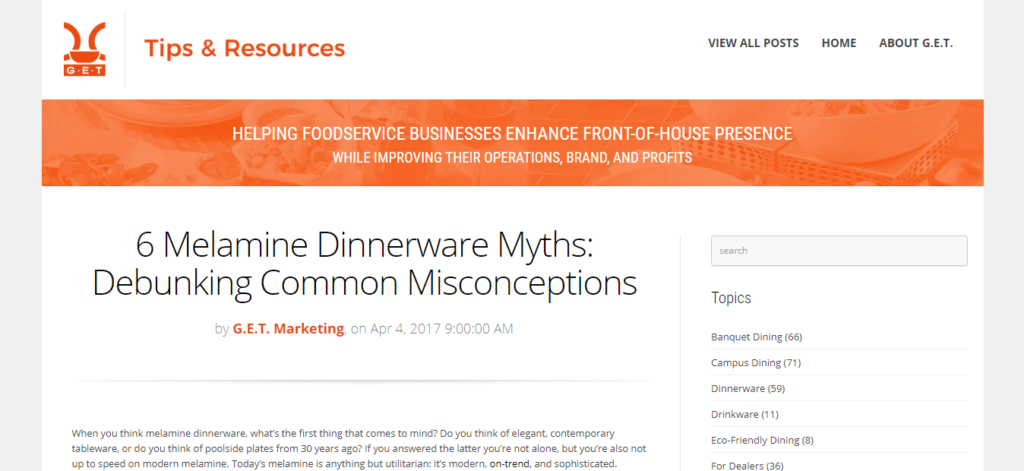
Даже если в вашей сфере нет особо вредных мифов, вредящих продажам, посвятите пару постов и дайте читателям адекватное представление о своем продукте. Расскажите, что предлагаете, какую пользу они извлекут после заказа, ни в коем случае не преувеличивайте возможную выгоду.
Возразите устоявшемуся мнению
Бунтари всегда привлекают внимание. Особенно если они громко не соглашаются с общепринятым мнением. Их замечают, к ним прислушиваются — это именно то, что нужно для поста в блоге.
Только учтите, что ваша позиция должна быть обоснованной. Если вы заявите, что 2 х 2 = 5, то просто выставите себя на посмешище.
Собственное мнение лучше противопоставлять различным прогнозам. Аналитика и прогнозирование вещи неочевидные, аргументировать можно любую точку зрения. Если кто-то из видных аналитиков прогнозирует, например, кризис в игрострое, вы можете выдать в блоге разгромную статью и доказать, что отрасль ждем подъем.

Эффективность приема зависит от того, насколько популярна выбранная для критики новость.
Заключение
Блог — один из ваших каналов связи с аудиторией, не нужно недооценивать этот инструмент. Если грамотно вести его, то через блог вы обзаведетесь дополнительной аудиторией, часть которой в будущем будет сконвертирована в клиентов.
Что касается правил ведения блога, то ГОСТа нет, тематику выбираете сами, но ряд общих рекомендаций все же дадим:
- будьте честны с читателями;
- не пытайтесь очернить конкурентов в постах — это дает обратный эффект;
- разнообразьте тематику. В блоге царит неформальная обстановка, поэтому уместен и юмор, и сарказм;
- публикуйте материалы регулярно. Ежедневно размещать по 5-10 постов не нужно, это не новостная лента, но хотя бы 1 публикация в неделю должна быть.
Остальное зависит только от вас. Если обладает харизмой, хорошим слогом и юмором, свою аудиторию гарантированно найдете.
